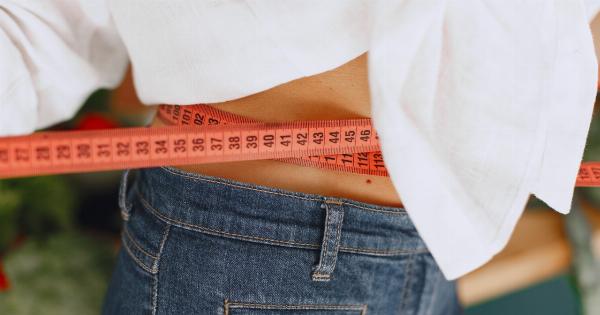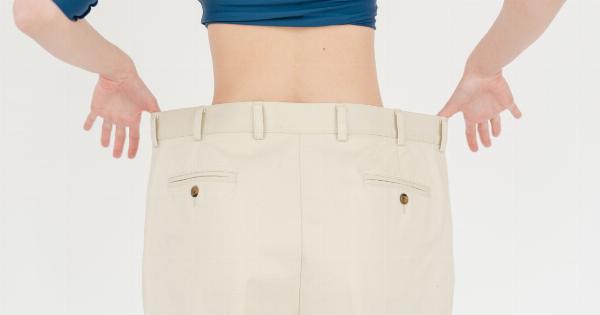Fat is an essential macronutrient that is required by the body to function properly. There are two types of fat in the body, visceral fat and subcutaneous fat.
Visceral fat is the fat that surrounds the organs in the body and is considered unhealthy, while subcutaneous fat is the fat that is found just beneath the skin and is considered less harmful. There are several ways to determine the type of fat stored in your body, which we will discuss in this article.
1. Body Mass Index (BMI)
The Body Mass Index (BMI) is a measure of body fat that is calculated by dividing your weight in kilograms by your height in meters squared. It is a simple and easy way to determine if you are underweight, normal weight, overweight or obese.
A BMI of 18.5 to 24.9 is considered normal, while a BMI of 25 to 29.9 is considered overweight and a BMI of 30 or higher is considered obese. BMI can give you an indication of whether you are carrying more visceral fat or subcutaneous fat.
2. Waist Circumference
Measuring your waist circumference can help determine the amount of visceral fat that you are carrying.
Visceral fat is known to accumulate around the waist and belly area, so if your waist circumference is too large, you may be carrying too much visceral fat. A waist circumference of more than 40 inches for men and 35 inches for women is considered too high and may lead to health problems.
3. Magnetic Resonance Imaging (MRI)
MRI is a medical imaging technique that uses powerful magnets and radio waves to create detailed images of the body. It is a useful tool for determining the amount of visceral fat that you are carrying.
MRI can provide a clear picture of the fat stored around your organs, which can help identify any potential health risks.
4. Dual-Energy X-Ray Absorptiometry (DEXA)
DEXA is a medical imaging technique that uses X-rays to measure bone density. DEXA is also used to measure body fat and can give you a better understanding of the amount of fat that you are carrying.
DEXA can help differentiate between visceral fat and subcutaneous fat and can provide more accurate results than other methods.
5. Waist-to-Hip Ratio (WHR)
Measuring your waist-to-hip ratio is another way to determine the type of fat that you are carrying. To measure your waist-to-hip ratio, measure the circumference of your waist and hips and divide your waist measurement by your hip measurement.
A WHR of more than 0.9 for men and 0.85 for women is considered high and may indicate that you are carrying too much visceral fat.
6. Bioelectrical Impedance Analysis (BIA)
BIA is a method of measuring body fat that uses a small electrical current to determine the amount of fat in the body.
BIA is a quick and easy way to measure body fat and can give you an indication of whether you are carrying more visceral fat or subcutaneous fat. BIA is commonly used in medical settings and fitness centers.
7. Skin Calipers
Measuring skinfold thickness using skin calipers is another way to determine the amount of fat that you are carrying. However, this method is less accurate than other methods and can be challenging to do on your own.
Skin calipers only measure subcutaneous fat and do not provide an accurate picture of the amount of visceral fat in the body.
8. Body Fat Scales
Body fat scales use bioelectrical impedance analysis to measure body fat. These scales are widely available and are an inexpensive way to measure body fat. However, they are not as accurate as other methods and may provide inconsistent results.
9. CT Scan
A CT (computed tomography) scan is a medical imaging test that uses X-rays to produce detailed images of the inside of the body. A CT scan can be used to measure the amount of visceral fat that you are carrying.
However, it is an expensive and time-consuming method and is generally only used in medical settings.
10. Ultrasound
Ultrasound is a non-invasive medical imaging test that uses high-frequency sound waves to produce detailed images of the inside of the body. Ultrasound can be used to measure the amount of visceral fat that you are carrying.
However, it is less accurate than other methods and can be affected by factors such as hydration and intestinal gas.
Conclusion
Determining the type of fat that you are carrying can be helpful in assessing your overall health and identifying any potential health risks. There are several methods for measuring body fat, each with its own advantages and disadvantages.
By choosing the right method, you can get a more accurate picture of the type of fat that you are carrying and take steps to improve your overall health.






















